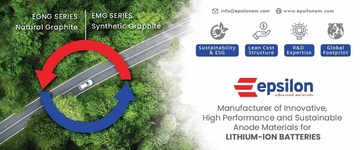Investor Perspectives on Accelerating Growth in the Indian EV Ecosystem
The decarbonization of the transport sector in India is at the center of global climate change abatement. Adding 300 million new vehicles to its roads by 2040 could lead to a four million barrel per day increase in oil demand. The Government has already pledged that by 2030, 30 percent of all new vehicle sales in the country will be EVs, a policy goal that has several strategic advantages including abating carbon emissions and improving energy security. In support of this pledge, it has introduced important initiatives at the national and state levels.
Investor Perspectives on Accelerating Growth in the Indian EV Ecosystem report is a joint effort between Columbia University's Center on Global Energy Policy, the International Institute for Sustainable Development, the Indian Council for Research on International Economic Relations, and Invest India.
It is intended to take stock of India's current EVs ecosystem and where the sector may be heading in the future, with a focus on drivers of and barriers to investment. The research for this study mainly involved in-depth consultations with experts, policymakers, investors, and companies, as well as results from an online survey with 59 EV experts and companies.
Addressing global warming depends in large part on the decarbonization of transport sectors around the globe. Perhaps no individual country—with the possible exception of China— can have a greater impact in this regard than India. With its large and growing economy and population, India is likely to add hundreds of millions of vehicles to its roads in the next few decades, making it the fastest-growing car market in the world. This means increased demand for fossil fuels and, in turn, increased greenhouse gas emissions. If India wants to meet the net-zero climate goals that it set last year at the 26th Conference of the Parties in Glasgow, it will need to find ways to accelerate its transition from internal combustion engine vehicles to electric vehicles (EVs).
India has already pledged that by 2030 30 percent of all new vehicle sales in the country will be EVs, a policy goal that has many strategic advantages beyond helping India reduce its carbon emissions, including energy security. In support of this pledge, it has introduced important initiatives at the national and state levels, not least its flagship EV scheme, Faster Adoption and Manufacturing of Electric Vehicles, which provides purchase subsidies to consumers. For India to keep pace with its ambitions, however, it will need substantially more foreign direct investment. Presently, there is a major gap between the investment levels in EVs and batteries required to remain aligned with net-zero scenarios and existing investment levels. But there is also strong optimism, including among investors, around India's EVs sector and its growth potential.
This report is a joint effort between Columbia University's Center on Global Energy Policy, the International Institute for Sustainable Development, the Indian Council for Research on International Economic Relations, and Invest India. It is intended to take stock of India's current EVs ecosystem and where the sector may be heading in the future, with a focus on drivers of and barriers to investment. The research for this study mainly involved in-depth consultations with experts, policymakers, investors, and companies, as well as results from an online survey with 59 EV experts and companies. The report presents the main takeaways of this research, which can be summarized as follows:
- India is successfully incentivizing consumer demand for electrified two-wheel and three-wheel vehicles and is beginning to scale up demand for electrified four-wheel vehicles and buses, too.
- India remains a minor player in battery manufacturing, which is still dominated by China, but it has initiated policy schemes to incentivize battery manufacturing in the country. Consulted investors and companies see major growth potential for India in this realm, which they believe will help it to expand domestic battery production and EV adoption dramatically.
- For India to achieve the scale of EV growth it desires, however, it will need to address financing challenges for consumers and the country's insufficient charging infrastructure. Although the government has formulated policy solutions on both fronts, investors and companies consulted for this report identified space for improvement and expansion. Other potential obstacles to this growth include supply chain shortages, lack of complementarity between state and federal policies, and skill gaps in the labor force.
- The country could also embrace battery swapping, which experts believe can help to expand EV demand and adoption and which the Indian government has already begun to support through policy initiatives.
Read the complete report here:




















